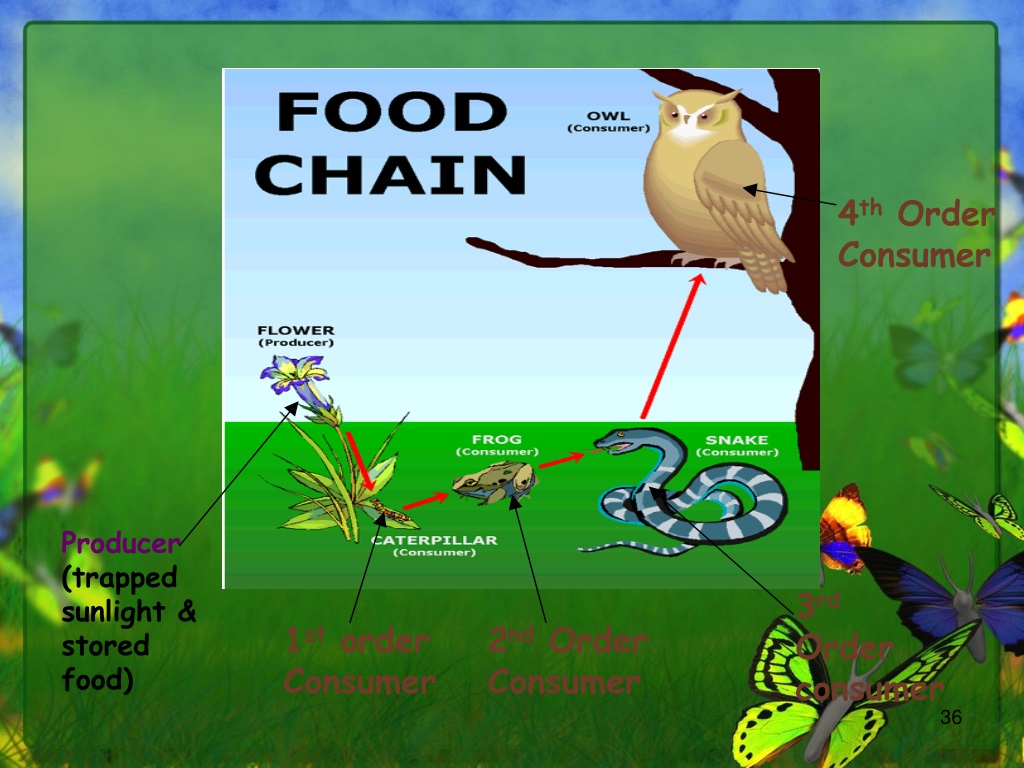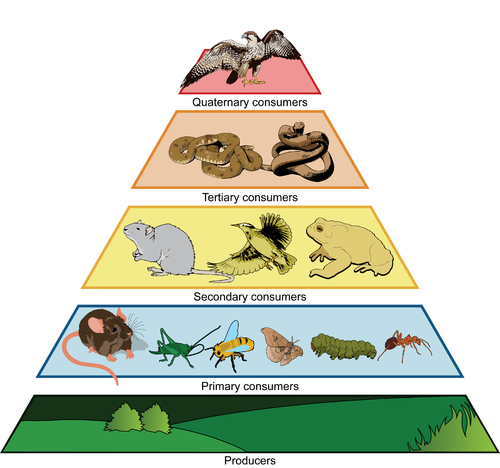What Is A First Order Consumer

Imagine a lush, vibrant meadow, teeming with life. Sunlight dapples through the leaves, illuminating a tiny caterpillar munching contentedly on a juicy leaf. It's a simple act, a fundamental part of the intricate web of life, and it directly connects this creature to the sun's energy.
The caterpillar, in this scenario, is a prime example of what scientists and ecologists refer to as a first-order consumer, also known as a primary consumer. These organisms occupy a crucial position in the food chain, bridging the gap between producers and the rest of the ecosystem.
In essence, a first-order consumer is an organism that feeds directly on producers, like plants or algae. Understanding their role is vital for comprehending the dynamics of any ecosystem, from the smallest pond to the largest forest.
Delving into the World of Consumers
To fully grasp the concept of a first-order consumer, it's helpful to understand the broader context of trophic levels within an ecosystem. A trophic level simply refers to the position an organism occupies in a food chain.
At the base of this chain are the producers, like plants and algae, who can create their own food through photosynthesis. These are the autotrophs, the self-feeders, who use sunlight to convert carbon dioxide and water into energy-rich organic compounds.
Next come the consumers, organisms that obtain energy by feeding on other organisms. Consumers are further categorized based on what they eat. The first of these are the first-order consumers.
The Primary Consumer: A Herbivore's Role
First-order consumers are almost always herbivores, meaning they primarily eat plants. Think of cows grazing in a pasture, deer browsing on leaves, or grasshoppers devouring blades of grass.
These creatures are the direct link between the energy captured by plants and the rest of the animal kingdom. They convert the plant matter into energy that they can use for their own growth and survival.
However, the term "first-order consumer" isn't limited solely to land-based herbivores. In aquatic ecosystems, zooplankton that feed on phytoplankton are also considered first-order consumers. Phytoplankton, microscopic algae, are the primary producers in many aquatic environments.
Examples in Diverse Ecosystems
Let's consider some more concrete examples of first-order consumers in various ecosystems.
In a forest, you might find squirrels eating nuts, rabbits nibbling on clover, or caterpillars munching on leaves. All of these animals are directly consuming plant matter and therefore act as primary consumers.
In a grassland, prairie dogs feeding on grasses and seeds, or bison grazing on the plains are excellent examples. These species are fundamental to maintaining the health and biodiversity of their respective habitats.
Moving to aquatic environments, consider a coral reef. Here, parrotfish graze on algae growing on the coral, and sea urchins also consume algae. These are both first-order consumers playing crucial roles in maintaining the balance of the reef ecosystem.
The Significance of First-Order Consumers
First-order consumers play a critical role in the overall health and stability of ecosystems. Their impact extends far beyond simply eating plants. They influence plant populations, nutrient cycling, and even the distribution of other species.
By consuming plant matter, they help to control plant growth and prevent any single species from dominating an ecosystem. This promotes biodiversity and ensures that a variety of plants can thrive.
Furthermore, the waste products of first-order consumers, such as feces and urine, return nutrients to the soil, enriching it and making it more fertile for plant growth. This is a vital component of nutrient cycling within the ecosystem.
First-order consumers also serve as a food source for higher-level consumers, such as predators. Without a healthy population of herbivores, predators would struggle to find food, and the entire food web could collapse.
The Ripple Effect of Change
Changes in the population of first-order consumers can have cascading effects throughout the entire ecosystem. Overgrazing, for example, can lead to soil erosion, habitat loss, and a decline in plant diversity.
Conversely, a decline in the population of first-order consumers can lead to an overgrowth of certain plant species, potentially altering the composition and structure of the ecosystem.
Human activities, such as habitat destruction, pollution, and climate change, can all have significant impacts on first-order consumers. Understanding these impacts and taking steps to mitigate them is crucial for protecting the health of our planet.
Beyond Simple Consumption
It's important to recognize that the interactions between organisms in an ecosystem are often complex and multifaceted. While first-order consumers are primarily herbivores, some may occasionally supplement their diet with other food sources.
For example, some herbivores may consume small amounts of insects or other invertebrates, especially during periods of resource scarcity. This doesn't necessarily change their classification as a first-order consumer, but it does highlight the adaptability of these organisms.
Furthermore, the relationship between first-order consumers and producers is not always one-way. Some plants have evolved defenses against herbivores, such as thorns, spines, or toxic chemicals.
This creates an evolutionary arms race, where plants develop defenses, and herbivores evolve adaptations to overcome those defenses. This constant interplay shapes the characteristics of both the plants and the herbivores.
Looking Ahead: Conservation and Understanding
As we face increasing environmental challenges, understanding the role of first-order consumers in maintaining healthy ecosystems is more important than ever. Protecting their habitats and managing their populations are crucial steps in preserving biodiversity and ensuring the long-term health of our planet.
By supporting sustainable agricultural practices, reducing pollution, and combating climate change, we can help to create a world where first-order consumers, and all other organisms, can thrive.
The humble caterpillar, munching on its leaf, is a reminder of the interconnectedness of all living things and the vital role that each organism plays in the intricate web of life. Let us strive to understand and protect these essential contributors to our planet's ecosystems.

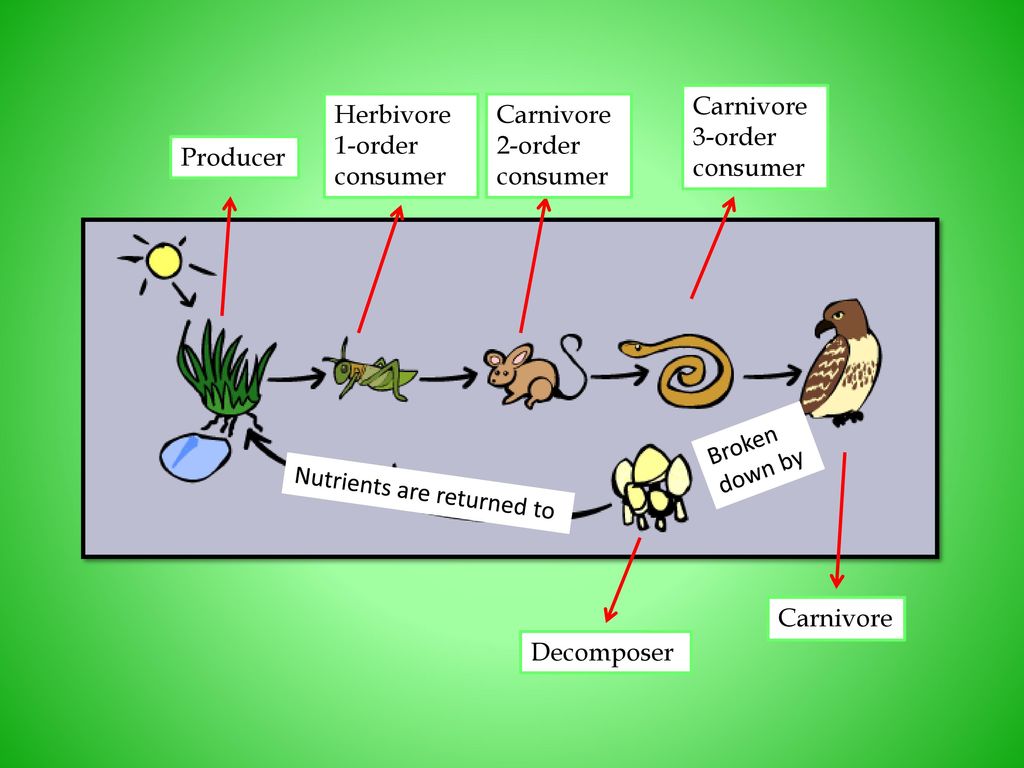



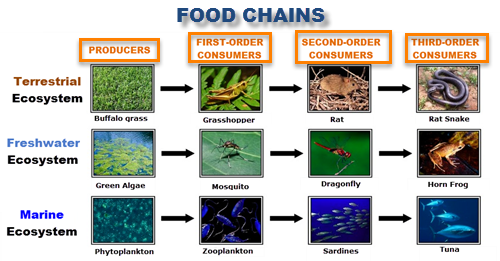

+Consumers.jpg)
+or+primary+consumers+-Herbivores.jpg)
.jpg)
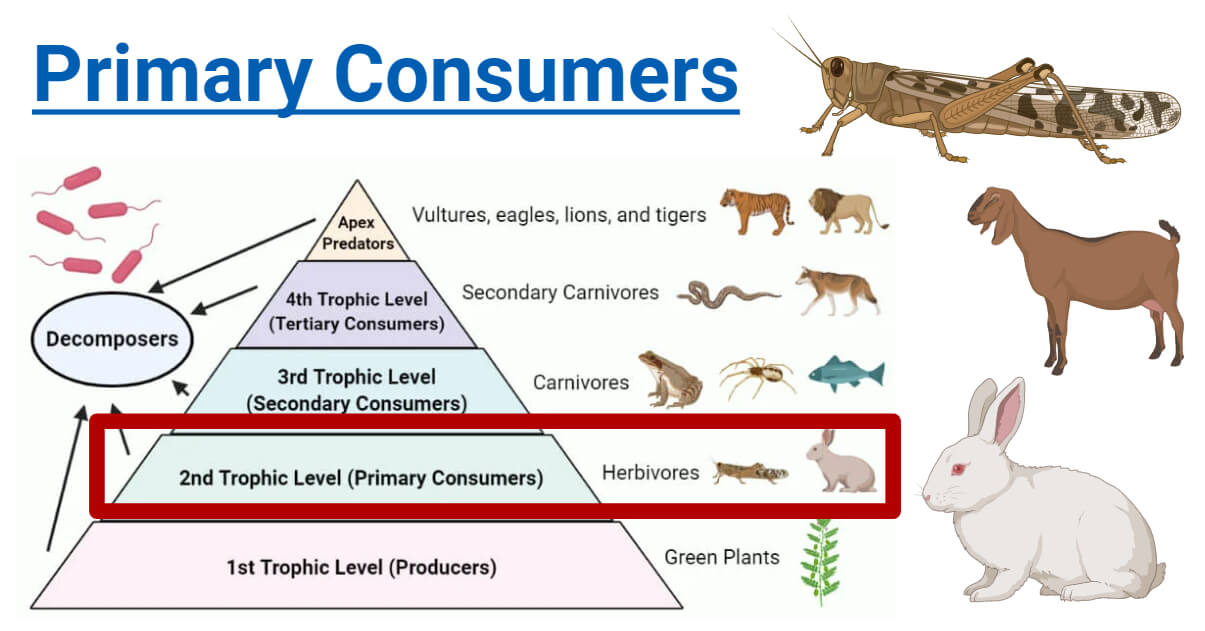
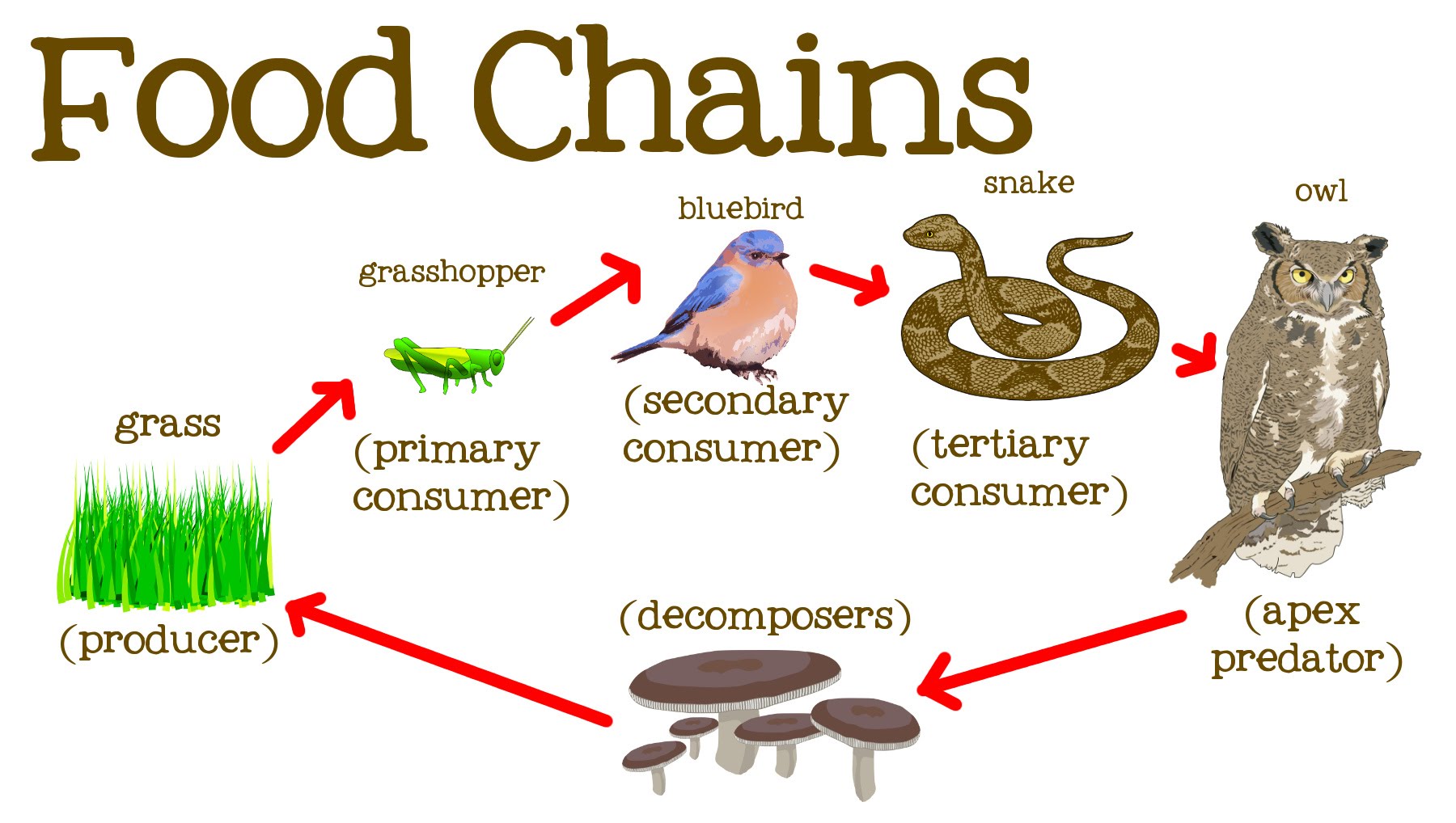


+4+types:.jpg)
